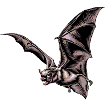Museum, University of Nebraska State

University of Nebraska State Museum: Mammalogy Papers
Document Type
Article
Date of this Version
6-1-2007
Citation
Journal of Mammalogy (2007) 88(3): 712-727.
Abstract
The phylogenetics and phylogeography of the Jamaican fruit-eating bat (Artibeus jamaicensis) were examined based on analysis of DNA sequence variation in the mitochondrial cytochrome-b gene for 176 individuals representing all 13 subspecies of A. jamaicensis (sensu Simmons 2005). Results document that A. jamaicensis (sensu Simmons 2005) comprises 3 monophyletic assemblages that are separated phylogenetically by the presence of A. obscurus, A. lituratus, and . amplus. According to the mitochondrial DNA sequence variation, A. jamaicensis, A. schwartzi, and A. planirostris are appropriate species-level names for these lineages. Haplotypes identifiable as A. jamaicensis were absent east of the Andes Mountains in South America; haplotypes of A. schwartzi were documented throughout the Lesser Antilles and from northern Venezuela, and haplotypes of A. planirostris were identified east of the Andes Mountains in South America, north of the Orinoco River in Venezuela, and from the southern Lesser Antilles. Haplotypes of Artibeus jamaicensis, A. schwartzi, and A. planirostris were identified sympatrically on Carriacou, a small island in the southern Lesser Antilles that is ecologically monotypic. The magnitude of genetic divergence separating A. jamaicensis, A. planirostris, and A. schwartzi essentially equals the magnitude of genetic divergence distinguishing A. lituratus, A. obscurus, and A. jamaicensis. Studies of the nuclear genome will be required to understand the biological implications of these patterns in the mitochondrial genome.
Included in
Biodiversity Commons, Molecular Genetics Commons, Zoology Commons


Comments
Copyright 2007, American Society of Mammalogists. Used by permission.